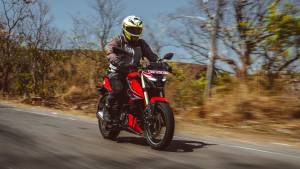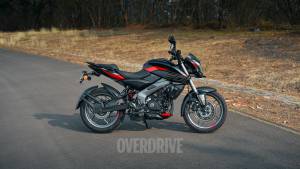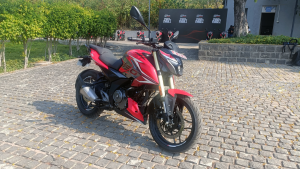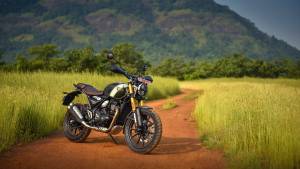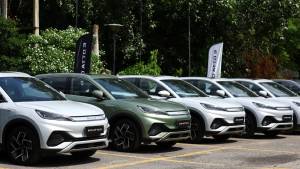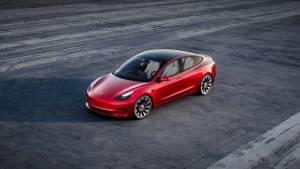2019 Bajaj Qute first drive review
The Bajaj Qute was showcased in 2012 and has been on sale since 2016. Yup, that's a fact. Not in India, though. It went on sale abroad as Bajaj locked horns with established car manufacturers over the legality of the Qute plying on Indian roads, simply because this type of a vehicle had no official classification in the market. Questions about crash worthiness were also posed and up until last year, the Qute was embroiled in bitter courtroom battles.
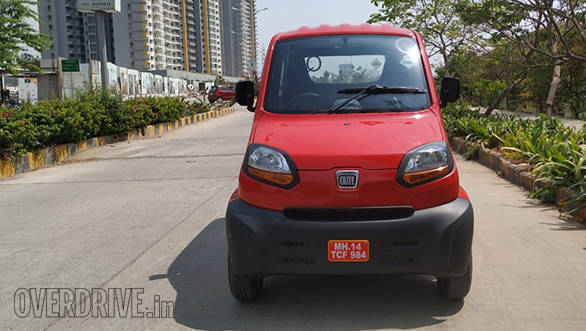
In 2018, the road and transport ministry formally introduced the quadricycle class of vehicle in India, which means you and I can buy it and drive it on our streets. It's available for both commercial and personal use which only broadens its scope in the market. Interested? Want to know what is a quadricycle and what's it like to drive? Read on.
What is a Quadricycle, after all?
Quadricycles are microcars, a class of vehicle that has been on sale in the European Union for quite some time. They have a specific size and weight limit and must meet set emission and crash safety norms. The Qute conforms to all Indian mandates and has also got the European WVTA (Whole Vehicle Type Approval) certification awarded by RDW Netherlands.
Design and build
At first glance, you can't help but notice what a cute little thing the..err. Qute is. Its tiny dimensions makes you want to give it a hug and pat its head, or the roof, in this case.
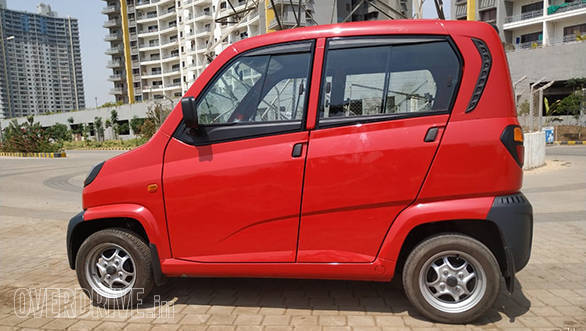
Bajaj's intent was to create a strict, city runabout which also doubles up as a last mile transport vehicle in villages or remote areas. Which explains the small size (2,752mm x 1,312mm x 1,652mm). It certainly looks like a toy car from some angles and we mean that in a good way, of course.
The shape of the headlamps lends the Qute a bug-eyed face, adding a dose of character in the process, while the blacked out bumper contrasts with the bright body colour.
The side profile highlights the almost upright windscreen and tall stance of the Qute.
Bajaj has put in some effort to ensure it's not slab-sided by adding a crease line that stretches from the front to the rear fender, and another one that emerges from the front door and merges with the rear bumper.
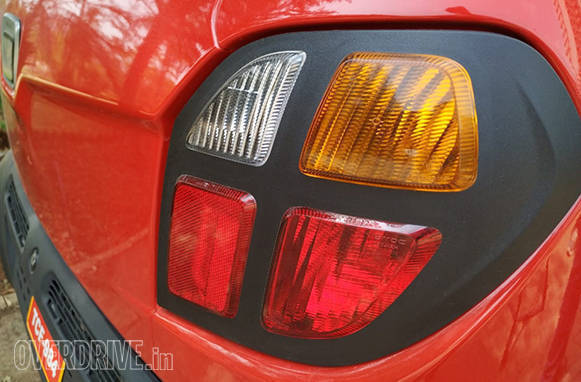
A compact tail lamp cluster flanks either side of the rear end and on the whole, the Qute bears a design that's unique in the market. Now, that also adds to the novelty factor and judging by the curious glances and number of people pulling to get a second look, the Qute is bound to attract attention wherever it goes.
Bajaj had to stick under the weight limit of 475kg as mandated for the quadricycle which is why the body is made up of sheet metal and plastic. So the areas that require high rigidity, such as the roof and pillars, are made of sheet metal while the doors and bonnet are made of plastic.
The interior is purely utilitarian and the materials used as well as fit and finish highlight the fact that the aim was to keep the cost of production as low as possible.
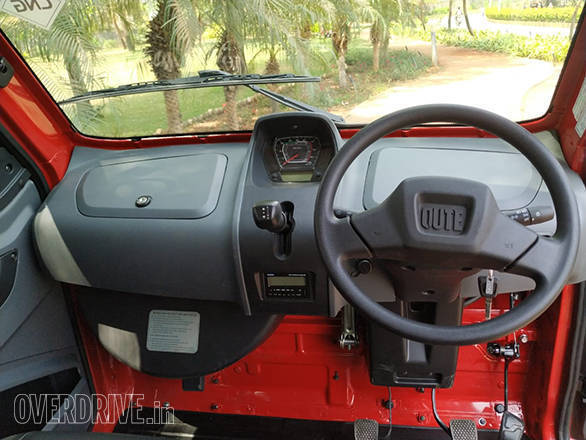
The layout of the dashboard is simple with an analogue-digital instrument console mounted in the centre. It has a digital readout for the fuel level, gear selected, odometer. It, frankly, is the only bit about the interior that looks modern.
There are no AC vents and in fact, no provision for a blower or defogger as well. It'll seem as a glaring omission to many, but considering the weight limit and the puny size of the engine, it's not possible to incorporate an air-conditioner. Bajaj's solution, for now is a set of vents on the inside of the A-pillars that receive air via a duct above the front bumper (actually looks like a mini grille) and channel it to the driver and co-driver. But as clever as it might be, it's ineffective in stop-go traffic.
Bajaj has cleverly optimised storage space by incorporating two, lockable glove boxes on the dashboard and deep door pockets that can accommodate water bottles and other knick- knacks. I personally like the positioning of the gear lever and the sequential, all-up, all-down shift pattern is remarkably easy to use and so rally car like!
In keeping with current needs, there is a 12V charging socket and music player with AUX and USB compatibility.
Ergonomics
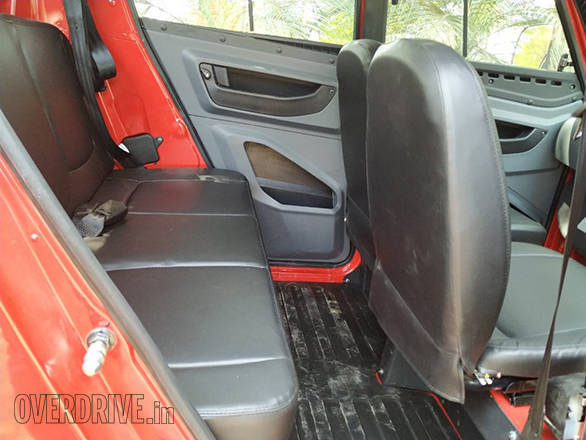
The seating position is quite like how you sit in a van, albeit with the steering set a tad low. The driver's seat moves fore or aft but cannot recline. The rest of the seats are fixed. Given the clever packaging, there is ample knee room, headroom and shoulder room for four people, including the driver.
What about boot space?
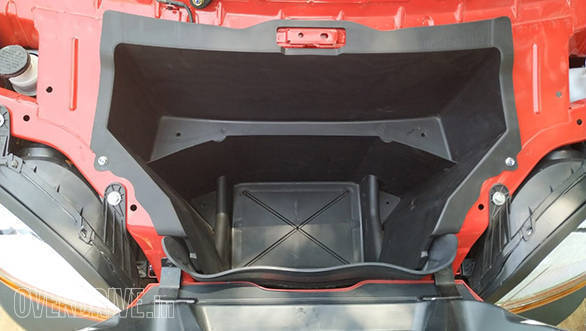
That has been cleverly designed as well. The area under the bonnet can store luggage upto 20kg and Bajaj will sell you a roof-mounted carrier as well, which has a rated capacity of 40kg, taking the total to 60kg.
Engine and performance
The Qute is powered by a 216cc, single-cylinder, four-stroke, twin-spark (DTSI) engine. The CNG variant produces 11PS at 5,500rpm and 16.1Nm at 4,000rpm, while the petrol powered version produces 13.18PS at 5,500rpm and 18.9Nm at 4,000rpm. It's paired to a five-speed transmission.
At first glance, these power and torque figures are identical to what we see 125-150cc motorcycles produce, which'll make you wonder if it's enough to power a 400kg+ four-wheeler. But, out in the real world, and keeping the Qute's application in mind, the performance is adequate.
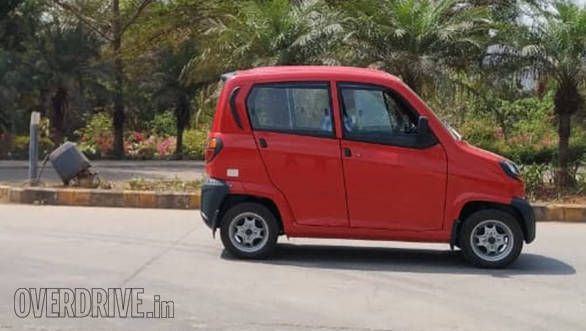
While negotiating city traffic, the Qute picks up speed quickly, aided by its short first and second gears. In fact, the sprint upto 30 to 40 kmph felt quicker than an auto rickshaw and at par with the pace that rest of the traffic carries, between lights. Keep in mind that we were allotted a CNG Qute and the petrol version will be quicker.
That said, we can't comment on how the Qute will behave under a full load of people and luggage, especially on a steep incline, but Bajaj assures us that the performance won't dip significantly.
Engine refinement is pretty good but it gets quite vocal towards the redline. It's best to shift up early rather than overrevving the engine.
The top speed has been limited to 70kmph, in fifth gear, in the interest of safety.
Bajaj claims that the CNG variant is the most economical to run, covering 45km in a kilogram of CNG. The petrol powered vehicle is not too far behind, manages 35kmpl. Now this kind of efficiency translates to low running costs, which is imperative in commercial applications.
Ride and handling
Keeping an auto rickshaw as a benchmark, the Qute is miles ahead of the humble three-wheeler in this respect. Rickshaws are inherently unstable vehicles, owing to their three-wheel layout and that's where the Qute's extra wheel helps it score one point over. And then there's the suspension layout and monocoque construction that contributes to the stability.
The Qute employs an independent suspension setup at the front with coilover shock absorbers and an anti-roll bar, while at the rear, there's an independent suspension with a semi-trailing arm and coilover shock absorbers. All of this adds to a ride quality that's pliant and absorbs potholes with far better composure than an auto rickshaw.
The anti-roll bar actually plays a big role in ensuring stability during quick direction changes or while cornering. I drove around a roundabout, increasing my pace gradually to check if the Qute felt as if it would tip over, but it impressed with its stability. Braking was strong and felt adequate, despite the all-drum setup.
Safety
Besides seatbelts for all occupants, the Qute offers nothing else in the safety department. No ABS and no airbags. Also, the law does not require quadricycles to have such safety features and until that happens, the Qute will continue to sell with seatbelts only. On the flip side, compared directly to an auto rickshaw, Qute is definitely much safer, owing to its construction and the fact that it has proper doors.
Conclusion
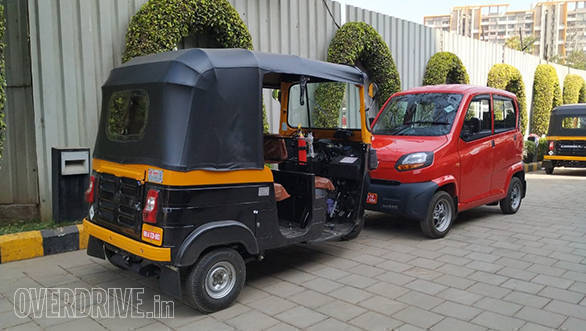
The Qute is the apt upgrade for someone who owns a three-wheeler, or a small business man looking for a means of transporting goods with ease and comfort. As a means of intra-city travel or transport, where speeds are low and traffic or parking can be a nightmare, the Qute makes a strong case for itself. But that's in the commercial space only. As a personal car, there is a lot to be desired in terms of creature comforts and safety.
At Rs 2.63 lakh and Rs 2.83 lakh for the petrol and CNG versions respectively, the Qute costs about a lakh more than the humble auto rickshaw and is most definitely worth the stretch.
Also see: Bajaj Qute First Drive Video
Starts Rs 2.48 Lakhs
216cc
Manual
11
16.1
43 Kmpl
Related Stories
Top Stories
Latest Videos
Most Popular
- Budget Sportbike Showdown: Kawasaki Ninja 500 vs Aprilia RS 457 vs Yamaha YZF-R3
- Mumbai-Pune Expressway speed restrictions updated
- 2014 Triumph Daytona 675 vs 2024 Kawasaki ZX6R - A Decade of Evolution in Supersport Motorcycles
- 2024 Hyundai Creta vs Toyota Urban Cruiser Hyryder vs Skoda Kushaq comparison review - the hype is real?
- Nissan Magnite EZ-Shift review - is the AMT any good?
